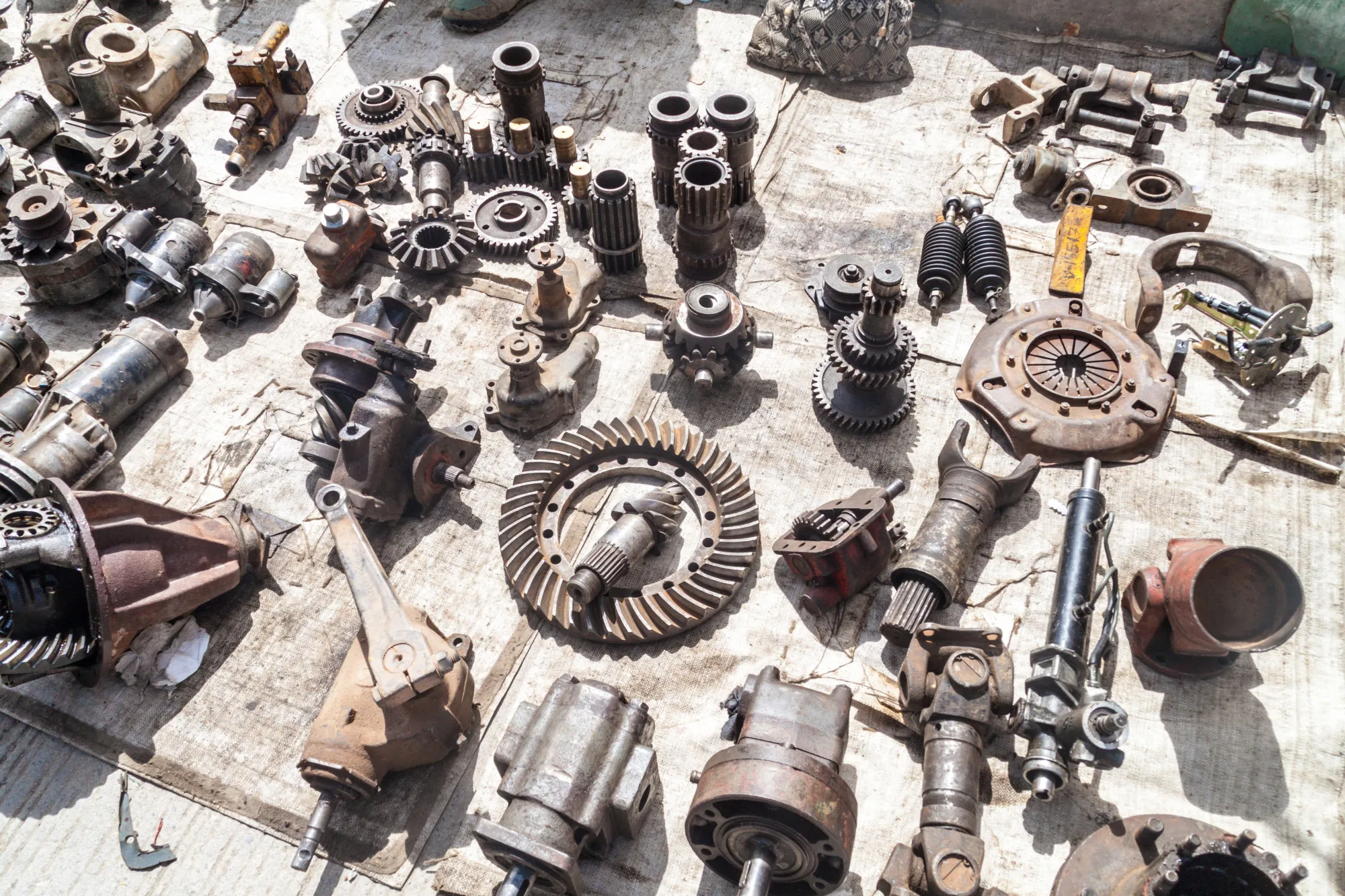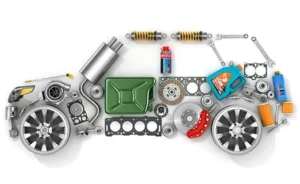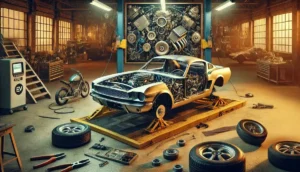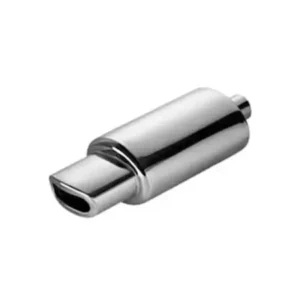The Heartbreak of Discontinued Parts: A Solution Exists
Have you ever felt that sinking feeling when you discover the part you desperately need for your beloved classic car has been discontinued for decades? Or perhaps you’ve winced at the astronomical price tag attached to that rare component only available from a collector halfway across the world. For classic car enthusiasts and restoration professionals alike, this scenario isn’t just frustrating—it can bring an entire project to a grinding halt.
But what if you could recreate virtually any automotive part with precision that matches or even exceeds the original manufacturer’s specifications? This isn’t science fiction—it’s the reality of modern reverse engineering in the automotive industry.
What Is Automotive Reverse Engineering and Why It Matters
Reverse engineering in the automotive context involves deconstructing an existing part to understand its design, functionality, and specifications. The process allows engineers to create a detailed digital model that can be used to manufacture an exact replica or an improved version of the original component.
According to the Society of Automotive Engineers (SAE), reverse engineering has become a critical methodology in maintaining vintage vehicles, with applications growing over 35% in the last decade alone.
The Growing Challenge of Obsolete Parts
Classic car restoration faces a mounting challenge as original equipment manufacturers (OEMs) discontinue support for older models. Consider these facts:
- The average production lifespan for a specific automotive part is approximately 7-10 years
- According to a Hagerty study, parts obsolescence now affects vehicles as recent as the early 2000s
- Nearly 65% of classic car restoration projects face delays due to parts availability issues
RDS specializes in bridging this gap by providing precise reverse engineering solutions for automotive enthusiasts and professionals who refuse to let obsolescence determine the fate of their vehicles.
The Reverse Engineering Process for Automotive Parts
Understanding the step-by-step process can help you appreciate the precision and expertise involved in recreating obsolete car parts.
1. Part Assessment and Documentation
Before any scanning or modeling begins, engineers thoroughly examine the original part (if available) or similar components to understand:
- Material composition and properties
- Functional requirements and stress points
- Manufacturing methods used in the original
- Integration with surrounding components
This critical first step informs the entire reverse engineering process, establishing parameters that will guide the project to success.
2. 3D Scanning Technology: The Foundation of Accuracy
The 3D scanning process employs sophisticated technologies to capture every detail of the original part:
- Laser Scanning: Captures surface geometries with accuracy to 0.025mm
- Structured Light Scanning: Ideal for complex surface features and intricate details
- Photogrammetry: Used for larger components where overall proportions are critical
- CT Scanning: Reveals internal structures for components with hollow sections or complex internal geometries
The National Institute of Standards and Technology (NIST) has established guidelines for 3D measurement technologies that help ensure these processes meet stringent accuracy requirements.
3. Converting Scans to CAD Models
Once the scanning is complete, specialized engineers convert the point cloud data into workable CAD (Computer-Aided Design) models. This transition from raw scan data to parametric 3D models requires significant expertise in both automotive systems and digital modeling.
“The transformation from scan to CAD is where engineering judgment becomes crucial,” explains a senior engineer at RDS’s product design team. “We’re not just copying shapes—we’re interpreting function, improving tolerances, and often enhancing the original design based on modern manufacturing capabilities.”
4. Virtual Testing and Validation
Before moving to production, comprehensive virtual testing validates the design:
- Finite Element Analysis (FEA) simulates stress, strain, and thermal conditions
- CFD (Computational Fluid Dynamics) for components that interact with fluids or air
- Virtual assembly testing ensures perfect fit with mating components
- Material property simulations validate performance characteristics
These simulation techniques allow engineers to predict how the component will perform under real-world conditions, often catching potential issues before any physical manufacturing begins.
5. Prototype Production and Physical Testing
Using advanced 3D printing and manufacturing methods, engineers create prototypes for physical validation:
- Initial prototypes often use polymers or aluminum to verify dimensions and fit
- Performance testing under simulated operating conditions
- Stress testing to verify durability specifications
- Integration testing with adjacent components
This real-world validation confirms that the reverse-engineered part will perform as expected when installed in the vehicle.
6. Final Production Implementation
Once validated, the part moves to final production using appropriate manufacturing methods:
- CNC machining for precision metal components
- Injection molding for plastic parts
- Metal casting for complex structural elements
- Advanced manufacturing for specialized components
Real-World Applications: Success Stories in Automotive Reverse Engineering
Case Study: Reviving a 1967 Shelby GT500 Restoration
When a restoration shop faced the challenge of missing dashboard components for a rare 1967 Shelby GT500, conventional sources had nothing to offer. The reverse engineering team was able to:
- Scan existing dashboard elements to capture the design language
- Reconstruct the missing components with period-correct aesthetics
- Validate the designs against historical documentation
- Produce components that were indistinguishable from originals
The result wasn’t just functional—it was authentic enough to satisfy the most discerning collectors.
Case Study: Improving Upon Original Designs
A classic British sports car suffered from notorious cooling system failures due to an inherent design flaw in the water pump housing. Through reverse engineering:
- The original component was scanned and modeled
- Engineering analysis identified the failure points
- The design was modified to improve coolant flow while maintaining original mounting points
- Modern materials with superior corrosion resistance were selected
The redesigned component not only looked identical to the original from the outside but delivered significantly improved reliability and performance. This represents the perfect harmony between preservation and practical improvement that modern reverse engineering offers.
Beyond Restoration: Performance Enhancements Through Reverse Engineering
Reverse engineering isn’t limited to reproducing exact copies of original parts. For many enthusiasts, it offers a pathway to enhance performance while maintaining a vehicle’s character.
Optimizing Engine Components
Engineers can reverse engineer original components and then optimize them for:
- Improved airflow characteristics in intake and exhaust components
- Reduced reciprocating mass for higher-revving engines
- Enhanced thermal properties for better heat management
- Strengthened structural elements for increased power handling
According to research from the Oak Ridge National Laboratory, these optimization techniques can yield performance improvements of 5-15% while maintaining original fitment and appearance.
Material Science Advancements
Modern materials science offers significant advantages when recreating vintage components:
- High-strength alloys that outperform original metals
- Carbon fiber reinforcements for critical structural elements
- Ceramic coatings for thermal management
- Advanced polymers with superior wear characteristics
“The ability to combine period-correct appearance with modern material performance is transforming how we approach classic vehicle maintenance,” notes a materials specialist from RDS’s engineering team.
The Technology Behind Precise Automotive Reverse Engineering
Advanced Scanning Technologies
The precision of modern reverse engineering relies heavily on scanning technology advancements:
- Portable CMM Arms: Allow for on-vehicle scanning without disassembly
- Blue Light Scanning: Captures precise data even on reflective surfaces
- Micro-CT Technology: Reveals internal geometries at micron-level precision
- Handheld Laser Scanners: Provide flexibility for hard-to-reach components
These technologies have revolutionized the field, enabling the capture of complex geometries that would be impossible to measure accurately with conventional methods.
Software Evolution
The software powering reverse engineering has seen dramatic advancements:
- Automated Point Cloud Processing: Reduces manual cleanup time by up to 70%
- Intelligent Surface Recognition: Automatically identifies geometric primitives
- Deviation Analysis Tools: Compare scan data to CAD with color-mapped precision
- Parametric Modeling Integration: Creates feature-based CAD from organic shapes
These software capabilities transform raw scan data into manufacturing-ready models with unprecedented efficiency and accuracy.
DIY vs. Professional Reverse Engineering: What You Need to Know
For car enthusiasts considering tackling reverse engineering projects, understanding the capabilities and limitations of DIY approaches is essential.
When DIY Can Work
Some reverse engineering tasks can be approached by dedicated hobbyists:
- Simple, non-critical components with basic geometries
- Cosmetic elements where perfect precision isn’t critical
- Projects where consumer-grade 3D scanning and printing are adequate
- Components that don’t experience significant stress or heat
When to Call the Professionals
Professional reverse engineering services become necessary for:
- Safety-critical components (brake systems, steering, suspension)
- Complex geometries requiring industrial-grade scanning precision
- Components subject to high stress, temperature, or pressure
- Parts requiring specific material properties or certifications
- High-volume production needs with consistent quality requirements
“The difference between DIY and professional reverse engineering is often the difference between ‘looks similar’ and ‘performs identically,'” explains a senior engineer at RDS. “When safety or reliability is at stake, that difference becomes crucial.”
Looking Forward: The Future of Automotive Reverse Engineering
The field continues to evolve rapidly, with several emerging trends shaping its future:
On-Demand Manufacturing
The combination of reverse engineering and advanced manufacturing is creating new possibilities for on-demand part production:
- Local manufacturing reduces supply chain dependencies
- Small production runs become economically viable
- Custom modifications can be integrated into reproduction parts
- Digital inventories replace physical warehousing of spare parts
According to the American Society of Mechanical Engineers (ASME), this shift toward distributed, on-demand manufacturing is reshaping the entire automotive aftermarket.
AI and Machine Learning Integration
Artificial intelligence is transforming reverse engineering workflows:
- Automated feature recognition speeds modeling time
- Machine learning algorithms predict wear patterns and failure points
- Generative design suggests optimized alternatives to original designs
- Pattern recognition improves scan data processing
These AI-driven advancements are reducing the time required for complex reverse engineering projects by up to 40%, making the process more accessible and affordable.
Collaborative Ecosystems
Community-based approaches are emerging as powerful forces in the preservation of automotive heritage:
- Digital libraries of scanned components
- Collaborative validation of reverse-engineered designs
- Shared testing data across restoration communities
- Open-source approaches to non-proprietary components
How to Get Started with Automotive Reverse Engineering
If you’re facing the challenge of obsolete or unavailable parts, here’s how to begin exploring reverse engineering as a solution:
Assess Your Needs
Begin by clearly defining what you’re trying to accomplish:
- Is this a one-off replacement for your personal project?
- Are you looking to produce multiple units for a club or community?
- Does the component require precise performance characteristics?
- Are there safety considerations that demand professional expertise?
Your answers to these questions will guide your approach and help determine whether DIY methods might suffice or professional services are necessary.
Gather Available Information
Collect as much information about the original part as possible:
- Original manufacturer specifications, if available
- Service manuals and parts diagrams
- Similar parts from related models or years
- Photographs from multiple angles
- Measurements of the mounting points and interfaces
The more reference material you have, the more accurate your reverse engineering project will be.
Choose the Right Partner
If your project requires professional services, selecting the right partner is critical:
- Verify experience specifically with automotive applications
- Review case studies of similar projects
- Inquire about their scanning and manufacturing capabilities
- Discuss testing and validation procedures
- Understand their approach to improving upon original designs
A qualified reverse engineering partner like RDS brings not just technical capabilities but also domain expertise in automotive systems and restoration standards.
Conclusion: Breathing New Life Into Automotive Classics
Reverse engineering has fundamentally changed what’s possible in classic car restoration and maintenance. Parts that were once considered irreplaceable can now be recreated with precision that matches or exceeds original specifications. This technology doesn’t just preserve automotive history—it ensures that classic vehicles remain drivable, enjoyable assets rather than static museum pieces.
Whether you’re restoring a priceless vintage automobile, improving the performance of a modern classic, or simply trying to keep a beloved vehicle on the road, reverse engineering offers a powerful solution to the challenge of obsolete parts.
Have you encountered a seemingly impossible parts sourcing challenge in your automotive project? Share your experience in the comments below, and let’s discuss how reverse engineering might provide the solution you’ve been searching for.
This article was created by automotive reverse engineering specialists with decades of experience breathing new life into classic vehicles through advanced engineering techniques. For more information about our services or to discuss your specific project needs, contact our team today.





